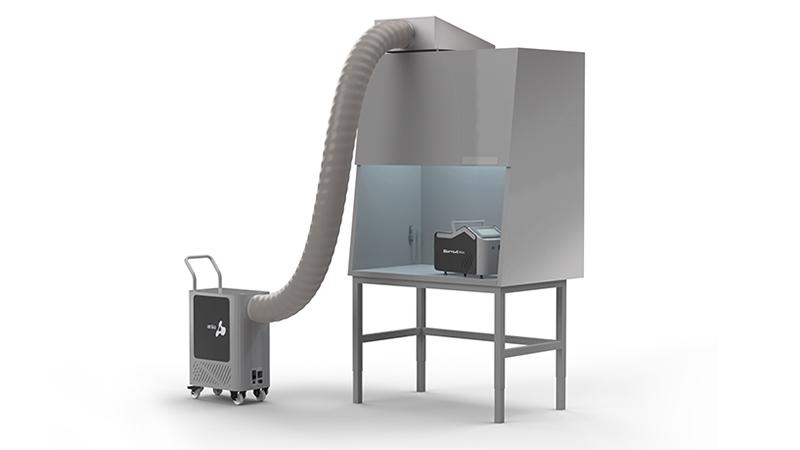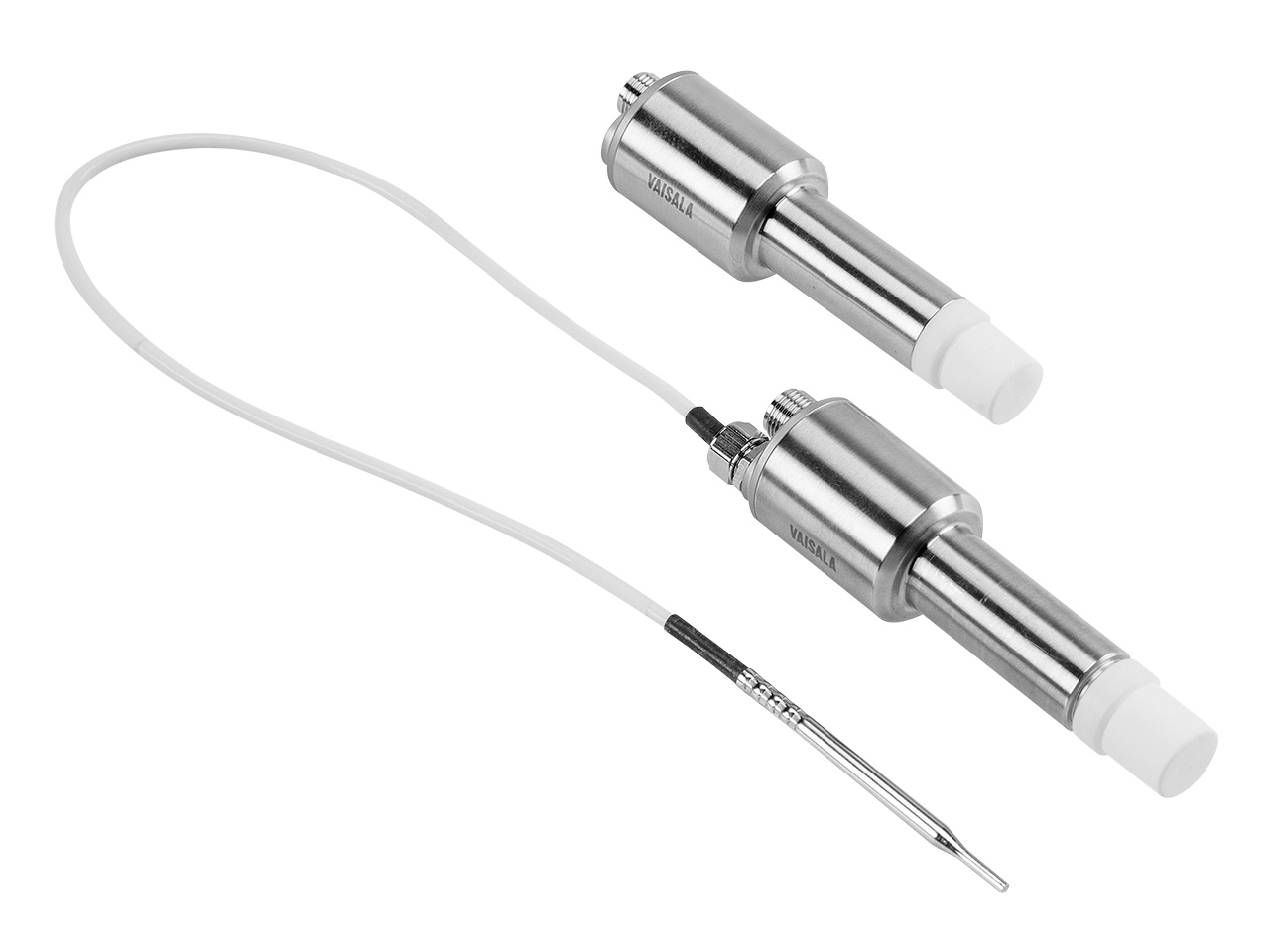New approach to V-PHP technology provides effective bio-decontamination for all
“You’ve got to start with the customer experience and work backwards to the technology.”
With these words, cofounder of Apple Inc. Steve Jobs laid out a dream and a challenge to design engineers everywhere. But in a world of accelerating change, it often seems like expert operators are required more than ever. One Italian equipment manufacturer has combined their knowledge of bio-decontamination technology and end-user training to design an innovative hydrogen peroxide vaporizer that optimizes both vH2O2 processes and user experience.
Amira Srl has been a trusted equipment provider in the life science sector since 2003, offering a range of solutions for contamination containment, control, and monitoring. Since 2013, the company has provided the Bioreset® hydrogen peroxide vapor generators for bio-decontamination. In 2021, the company launched their newest device: the Bioreset® Max, a lightweight, compact vapor generator that automatically adjusts hydrogen peroxide to optimal levels of efficacy.
Pietro Beltramo is Amira’s Product and Export Manager and was involved in designing and developing the Bioreset® Max vapor generator. “Our main intention with this new model was to make the generator easy to use. Our other models use different sensors and they do a fine job,” says Pietro. “But the operator should have a working knowledge of bio-decontamination methodologies. We were looking to make vaporized hydrogen peroxide bio-decontamination simple for all users – especially in environments like healthcare. The COVID-19 pandemic made the need for failsafe equipment even more urgent.”
Commercial hydrogen peroxide vapor generators are often used in aseptic production and research laboratories to perform bio-decontamination. Most bio-decontamination equipment is handled by skilled operators who are trained to perform and validate bio-decontamination processes.
Since the coronavirus pandemic, the need for bio-decontamination increased in sectors where many operators tasked with performing bio-decontamination were not trained in that knowledge area. Without a full understanding of vapor generator equipment, cycle phases, sensing devices, and critical process parameters, the decontamination may not be effective.
“The Bioreset® Max uses Vaisala’s HPP270 hydrogen peroxide vapor probe to measure several parameters: H2O2 ppm, temperature, and relative saturation,” says Pietro. “The HPP270 was the only probe we found that offered all these parameters in one unit. And it was the relative saturation value that was crucial to ensuring the generator could automatically and effectively adjust cycles.”
“The Bioreset® Max uses Vaisala’s HPP270 hydrogen peroxide vapor probe to measure several parameters: H2O2 ppm, temperature, and relative saturation,” says Pietro. “The HPP270 was the only probe we found that offered all these parameters in one unit. And it was the relative saturation value that was crucial to ensuring the generator could automatically and effectively adjust cycles.”
Unique to Vaisala’s HPP270 series probes, the relative saturation value indicates the humidity of the air caused by both H2O2 and H2O vapor combined. Once relative saturation reaches 100 %RS, the air mixture starts to condense. Relative humidity, by contrast, indicates the humidity of the air caused only by water vapor. This is why the condensation point of an air mixture with hydrogen peroxide vapor is different than that of an air mixture without hydrogen peroxide.
For example, take an environment at a temperature of 20 °C with H2O2 concentration at 500 ppm. The relative humidity level is 25%RH. The relative saturation will be at 60%RS. The air mixture will start to condense when relative saturation is 100%, but in this scenario, the relative humidity would only be at 45% RH.

• Space 2 contains H2O2 vapor and relative saturation is higher than relative humidity.
“During the design process, we were able to research many probes at Amira because we have fully equipped clean room and laboratory facilities. We offer testing environments to other organizations and provide bio-decontamination training. Through our testing and training activities we saw a real need for simpler devices that could reduce or eliminate the risk of operator error.” - Pietro Beltramo
Bio-decontamination is not only about understanding and controlling parameters. The environment under decontamination has an impact. “Some areas are more difficult to bio-decontaminate than others,” says Pietro. “If you are running vH2O2 decontaminations on different areas, you need to adjust the cycle based upon the volume of the area. You also need to consider components within the area. For instance, biosafety cabinets contain filters that can trap pathogens.
“Bio-safety cabinet HEPA filters stop the flow of any particle larger than 0.3 microns in diameter. So to decontaminate the filter, you need a gas with tiny particles to penetrate the medium (vaporized hydrogen peroxide is about < 0.001 microns). But, a major concern using vapor in an area with HEPA filters is condensation. Wetting the filter has to be avoided, so a ‘dry method’ vaporized process is preferred. Using the relative saturation value from the HPP270 probe, the Bioreset® Max automatically adjusts to maintain the vapor level below the point of condensation. Understanding the condensation points of a gas that contains both water and hydrogen peroxide is an expert level of knowledge. We designed a vaporizer that would allow non-expert users to perform successful bio-decontaminations every time, reducing any risk to components like HEPA filters.”
In automatic mode, the Bioreset® Max vaporizes 35% liquid H2O2 and injects the gas into areas up to 350 m3 to achieve a 6 Log (99.9999%) reduction of pathogens on all exposed surfaces. The process can be remotely monitored on a personal computer, tablet, or smartphone. To operate the vapor generator, the user selects the type of area, either biosafety cabinet or room bio-decontamination, then presses a button to launch the generator in automatic mode.
“With a minimum amount of user input, the generator depends on the sensor measurements to manage the cycles,” says Pietro. “The interface prompts the user based on their selection of area type. For instance, if the user selects ‘Biosafety Cabinet’ the interface directs the user to connect the catalyst, which includes an integrated blower with real airflow up to 650 m3/h.
“If the user selects ‘Room’, they are prompted to input the volume in cubic meters. The vapor generator will adjust the cycle to optimal levels. However, even if you were in a 10 m3 room and accidentally input 100 m3, the machine would still adjust the cycle to optimal injection level and time. That’s because the process is driven by the values coming from the sensor. Based on the relative saturation value, temperature, and time, the generator ensures a foolproof bio-decontamination cycle.”
Advancements in technology need not always entail systems that are more complicated. The increasing need for effective bio-decontamination beyond traditional contamination-controlled environments has created need for simpler systems that do not sacrifice efficacy. To serve this growing need, Amira created a vapor-phase hydrogen peroxide generator that is easy for anyone to use and extremely effective in any environment.
“The vapor generator will adjust the cycle to optimal levels... the process is driven by the values coming from the sensor. Based on the relative saturation value, temperature, and time, the generator ensures a foolproof bio-decontamination cycle.”
Pietro Beltramo



